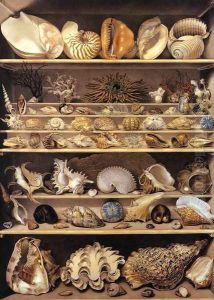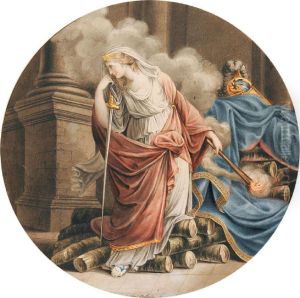Alexandre-Isidore Leroy De Barde Paintings
Alexandre-Isidore Leroy de Barde was a French naturalist and artist, born in 1777, known for his work that often blended scientific curiosity with artistic endeavors. While not as widely recognized as some of his contemporaries, Leroy de Barde's contributions to the fields of natural history illustration and taxonomy were nonetheless significant during his time. His works are characteristic of the Enlightenment's quest for knowledge and the era's inclination towards detailed classification of the natural world.
Leroy de Barde's artistic career is often highlighted by his collection of illustrations that depict a variety of natural specimens. These include his detailed depictions of shells, which were esteemed for their precision and beauty. His work provided valuable visual references for scientists and collectors during a period when the cataloging of biodiversity was in its formative stages. His illustrations were not only scientifically accurate but also aesthetically pleasing, reflecting a harmony between art and science that was emblematic of the period.
Despite the fact that Leroy de Barde was active during a vibrant period of French art and science, detailed biographical information about him is somewhat limited. He lived through a transformative period in European history, which included the French Revolution and the Napoleonic Wars, and these events undoubtedly influenced the context within which he worked. Leroy de Barde's death in 1828 marked the end of a life devoted to the meticulous study and representation of nature, and his legacy is preserved in the collections of natural history museums and in the pages of early nineteenth-century scientific publications.


